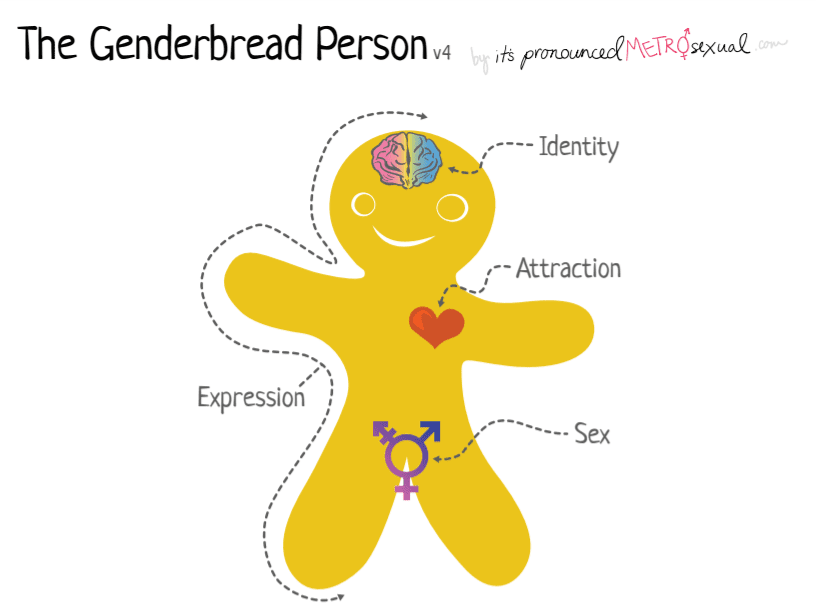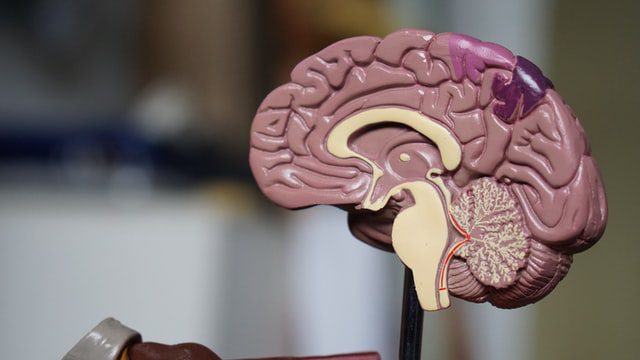
Causes of Transsexualism: And Why That Is Not The Right Word
Let us first address the terminology in use for this article.
We are aware that the term ‘transexual’ is sometimes described as outdated and might no longer be accepted terminology for some people. However, much of the information available on the internet today still uses the term; therefore, we are going to provide a definition here that is in line with how it was used in the past. It might make research on the topic more accessible.
«Transexual», was used to describe a transgender person who had undergone gender-affirming treatment of some sort, usually surgery. At the same time, «transgender» was an umbrella term to describe someone who did not identify with their primary and secondary sex characteristics. The most common treatment for gender dysphoria in transgender health is cross-sex hormonal treatment.
We should remember that gender identity is different from sexual orientation. Sexual orientation refers to what an individual is attracted to in another person and has nothing to do with how they feel about their own gender identity. Gender identity deals with how one identifies with one’s anatomic sex.

Gender Identity Disorder (GID)
Something that significantly impacted views on gender identity was the formation of gender identity disorders in the diagnostic and statistical manual within the last 100 years. Although the disorder was eventually removed, it managed to create significantly problematic associations between gender identity and mental health disorders.
The previous incident of including homosexuality as a mental illness was equally problematic. Having any gender-related incongruence associated with mental disorders causes a lot of unnecessary confusion within society and makes life very difficult for transgender people.

Gender Identity and Gender Dysphoria
Once GID had been removed from the DSM, a new criteria category known as Gender Dysphoria was created. This diagnosis is far less problematic as individuals who are transgender often experience Gender Dysphoria as a result of the incongruence between their biological sexual characteristics and their gender identity. This can originate in childhood, and the number of transgender children is rising.
It can also first present in adolescence, and because this is already a stressful time that is characterized by many uncomfortable changes to the human body, it is vital to offer support to transgender youth. It is not uncommon for hormone treatment to start around the time of puberty. This makes gender transition easier later in life.
What largely contributed to the acceptance of a diagnosis for Gender Dysphoria was the fact that treatment for the condition is indicated as gender affirmation treatments, usually a combination of hormone treatment and surgical treatments. There is no longer an attempt to change gender identity but rather to change the body in an effort to create more congruence between the identity and the external sexual characteristics.
Difference Between «Transsexual» and «Intersex»
This is one aspect of terminology that might confuse newcomers. So let us explain the difference in order to avoid any unnecessary confusion.
As mentioned earlier, «transsexual» usually refers to transgender individuals who have undergone some kind of gender affirmation treatment.
Intersex refers to an individual who was born with sex characteristics of both a male and female nature. Such cases are usually classified as physical birth defects.

Sexual Differentiation
Sexual differentiation refers to the biological process involved in the development of sex characteristics in a zygote.
In the very beginning, all zygotes are biologically female, and only after some time does sex hormones influence either the continuation of female development or a shift towards male sex characteristics.
Sex differentiation will affect things like chromosomes, genes, anatomy, hormones, and gonads, to name a few. The sex-specific chromosomes are present at conception as the zygote will receive one chromosome from each parent, and they will either have an XX or XY, which determines certain aspects of biological sex.
In rare cases, there can be an extra sex chromosome, or one can be missing, but these are medical disorders and tend to carry other health risks as well; it does not have much to do with gender identity, as we are discussing it here.
Initial physical differentiation can begin as early as eight weeks gestation; however, this will not be visible on scans as it is internal.

Sex Hormones
There are quite a few biological hormones that are involved in sex differentiation, the development of primary sexual characteristics and the development of secondary sexual characteristics, as well as further maintenance of sex characteristics.
Specifically, there are male hormones and female hormones that develop and maintain these characteristics.
One way that transgender identity can be expressed externally is through hormonal treatment that will alter secondary sex characteristics for the purpose of gender expression. Hormone regimens should ideally be managed by someone who has experience in clinical endocrinology and understands sex pheromones.
Neurological Differences
There has been scientific evidence to support the idea that the brains of transgender people do not match their sex assigned at birth. In fact, specifically with transgender women, they seemed to have female-typical brains in three different areas of interest. They are specifically related to the number of nuclei in these areas, which is distinctly different between biological males and biological females. These findings strongly suggest that transgender identity can be associated with a distinct cerebral pattern. Therefore, the brain of a trans woman would look different than the normal female range that is seen in control females. The same is then true for trans men; their brains would look distinctly different from the normal male range found in control males.

Biological Theory of Gender
To an extent, with the knowledge that we have about biological sex today, it seems oversimplified to root gender identity in biology. The reason for this is that human biology is not the same for everyone. Whatever commonalities are shared in biology, they are often rudimentary, and the more intricate parts are diverse.
Furthermore, biology is not static. Our biology continues to change and evolve as we advance in age and as we move through life. This also means that biology is highly complex.
It is no secret that nothing within our biological world can be traced back to a single biological factor. Nothing operates in isolation.
Human Psychosexual Differentiation
This is the process of the development of identity associated with gender. It emphasizes the importance of how an individual thinks and feels about their gender and does not highlight physical sex as the most important aspect of gender.
There are also many suggestions that we do not differentiate into only two genders. The binary approach to gender is also falling away in modern society. Concepts like the ‘opposite sex’ are becoming outdated. There is strong evidence to support the notion that there is a spectrum from female to male and that a person can find themselves anywhere on that spectrum. It is extremely rare for anyone to identify fully with one or the other, rather, a person can identify with predominantly female features, but it is unlikely that anyone should find themselves on the extreme ends of the female to male spectrum.

So, What Causes Gender Dysphoria?
In Conclusion
The ultimate truth is that we do not have a definitive answer at this point. The causes and treatment of gender dysphoria can be extremely difficult to study. It is one of a few medical fields that need to rely mostly on human studies because no one knows how an animal thinks and feels about its gender identity.
There are also aspects of such studies on humans that would be highly unethical, such as sex manipulation on children and babies, etc. Although such things would give us clear answers, it is far too unethical and horrific to even consider. Especially when looking at cases like David Reimer.
There are some studies that strongly suggest that some kind of chemical exposure during prenatal development can have adverse effects on sexual development. For example, there is some suggestion that unusual prenatal androgen exposure can be linked to atypical male play behavior in children of any gender. But prenatal androgen exposure on its own cannot be a sole cause, and there does not seem to be a direct link between this and gender dysphoria.
Furthermore, there has been some suggestion that there are genetic factors at play. This comes directly from twin studies. This is in addition to differences found in the human brain. Specifically, there are size differences and significant differences in nuclei density between the male and female brains. This strongly suggests that if there is a difference between chromosomal and neural sex development, it could result in gender dysphoria.
At this point, the one thing that we can say for certain is that transgender identification is not a psychological thing. It is not something that can be resolved with therapy, and it is not a mental illness. However, feelings of gender incongruence result in gender dysphoria, which causes a significant degree of distress, and the only way to successfully alleviate this kind of distress is if individuals receive cross-sex hormones.
If a person does not identify with their birth sex, it might be a case that the changes in fetal hormone levels produced in the body assigned them an opposite gender to what they identify with.



